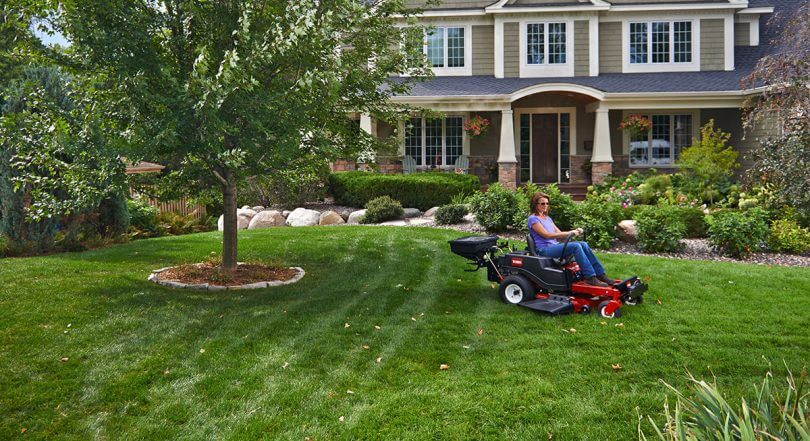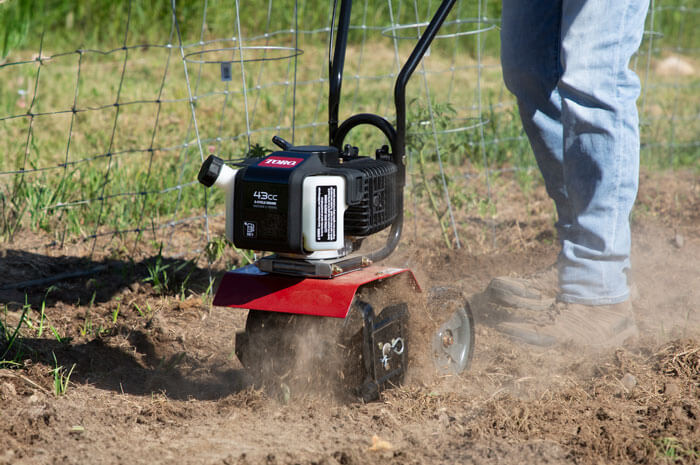
Have you ever heard friends or neighbors talk about overseeding a lawn, but wondered what exactly that means? How about overseeding versus reseeding? You’ve come to the right place! Overseeding, commonly known as reseeding your lawn, is a simple way to jump-start new turf growth and thicken your lawn. By spreading fresh grass seed over existing grass, you are able to fill in thin spots to achieve a lusher lawn without tearing up any turf or soil.
Does My Grass Need Reseeding?
Not every lawn needs overseeding. Existing lawns that are looking especially tired from the stresses of summer heat, are demanding extra water and fertilizer to do well, or are becoming susceptible to insects and disease would likely benefit from overseeding. Cool-season grasses like bluegrass, fine fescue, tall fescue, perennial and annual ryegrass, which struggle more with the effects of heat than warm-season grasses, have the greatest opportunity to reap the most benefit.
Overseeding vs. Sod
This choice often comes down to judgment and what seems easiest, but there are some basic guidelines you may find helpful. For your lawn to benefit from overseeding, it’s best for it to be at least half covered in grass. If your grass is sparse and unhealthy, it may be best to start from scratch rather than attempting to overseed. In those instances, resodding part or all of your lawn may be the best choice.
Why Should I Overseed My Lawn?
Overseeding gives you a rejuvenated, lush lawn! The process not only fills in the thin patches and enhances the overall look of the lawn, but it can save you money and time later. Overseeding your lawn reinforces your lawn’s health, resulting in a better response to mowing, fertilizing, and watering. Additionally, an overseeded lawn will likely be more equipped to hold its own against insects, disease, and even foot traffic.
How To Overseed
The best time to overseed a cool-season lawn is during late summer or early fall when these grass types are experiencing a surge in growth.
During the fall:
- warm-season weeds are less aggressive
- warm soil supports germination
- cooler air supports growth
- soil moisture remains consistent
If done in the fall, the grass seed has a few months to take root before low temperatures halt growth, but be sure to overseed at least 45 days before your average first fall frost as recommended by the Turfgrass Water Conservation Alliance.
If you choose to overseed your warm-season lawn, plan for late spring when these grass types begin their growth. For winter color on your warm-season grass, plan to overseed in the fall when your grass slows in growth and begins to lose its color. Be sure to wait until after nightly temperatures are regularly below 65°F.
How Do I Get Started?
Whether you have warm- or cool-season grasses, be sure to reseed your lawn during its growth spurt in order to get the most out of your overseeding. It’s also a good idea to test your soil before overseeding. If your yard is facing a pH issue or some other type of deficiency, you will want to take action before spreading new seed.
Once that’s done, and assuming you don’t need to treat your soil to modify pH, purchase your seed of choice from a local hardware store. If you don’t already have a spreader, you should also get one of those too. Great for overseeding, spreaders are also helpful tools for applying fertilizer treatments.
Once ready to overseed the lawn, you should mow your grass to a shorter height than usual — 2-3 inches should suffice. This is to ensure the seed is making contact with soil, not getting stuck on long blades of grass. After that, fill your spreader, set it to the recommended setting found on your bag of grass seed to ensure your seed is applied correctly, and then you can get started.
Looking for more tips to maximize your outdoor spaces? Check out these other resources from Toro YardCare.



